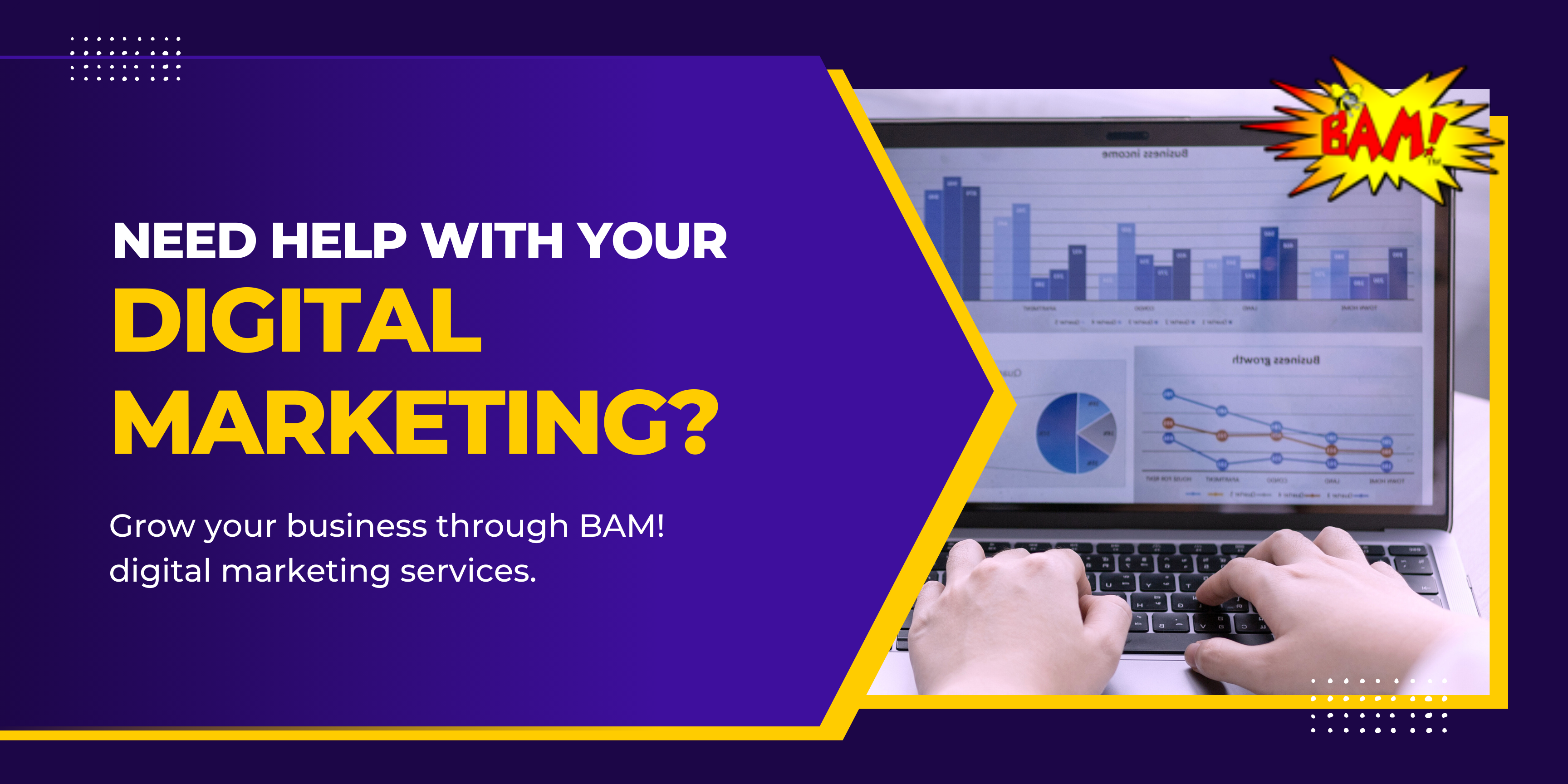Are you looking to take your website management skills to new heights? Look no further! “The Ultimate Guide to Effective Website Management” is here to provide you with all the tools and insights you need to excel in this crucial area. With BAM!’s wealth of experience in helping individuals and businesses achieve their goals, this guide is filled with valuable content that will empower you to effectively manage your website and drive success. So, whether you’re a seasoned pro or just starting out, get ready to unlock your website management potential and take your online presence to the next level!
Getting Started with Website Management
Whether you’re starting a new website or looking to improve an existing one, effective website management is crucial for success. From choosing the right content management system to optimizing for search engines, there are several key steps you need to take. In this comprehensive guide, we’ll walk you through each aspect of website management to help you create and maintain a successful online presence.

Choosing the Right Content Management System
The first step in effective website management is selecting the right content management system (CMS). A CMS is a software that allows you to create and manage your website easily, without needing to code. There are several popular options available, such as WordPress, Joomla, and Drupal. When choosing a CMS, consider factors such as user-friendliness, customization options, and support. Evaluate the features offered by each CMS and choose the one that suits your needs.
Setting Clear Goals and Objectives
Before diving into website design and content creation, it’s essential to set clear goals and objectives for your website. Define what you want to achieve with your website, whether it’s increasing online sales, generating leads, or providing valuable information to your audience. Having clear goals will help you make strategic decisions throughout the website management process.

Understanding Your Target Audience
To create an effective website, you need to understand your target audience. Conduct market research and create buyer personas to identify the demographics, interests, and needs of your potential website visitors. This information will guide your content creation, design choices, and overall website strategy. By understanding your target audience, you can tailor your website to meet their expectations and provide a valuable user experience.
Designing an Effective Website
A well-designed website is visually appealing, user-friendly, and optimized for conversion. Here are some key aspects to consider when designing your website:
Creating a User-Friendly Interface
A user-friendly interface is crucial for ensuring a positive user experience. Make sure your website is easy to navigate, with clear menus, intuitive buttons, and logical site structure. Use a consistent design throughout the website to maintain a cohesive look and feel.
Optimizing Website Navigation
Navigation is an important part of website design. Ensure that your navigation is easy to find and use, with clear labels and organized categories. Implement dropdown menus if necessary to simplify navigation for users.
Implementing a Responsive Design
With the increasing use of mobile devices, it’s essential to have a responsive website design. A responsive design adapts to different screen sizes and devices, ensuring that your website looks and functions well on smartphones, tablets, and desktop computers. This is crucial for providing a seamless user experience and improving your website’s search engine rankings.
Utilizing Call-to-Actions (CTAs)
Call-to-actions (CTAs) are buttons or links that prompt visitors to take a specific action, such as making a purchase, subscribing to a newsletter, or contacting your business. Use clear and compelling CTAs throughout your website to guide visitors towards the desired conversion goals. Experiment with different CTAs and monitor their performance to optimize your website for maximum conversions.

Creating Engaging and Relevant Content
High-quality content plays a crucial role in attracting visitors, keeping them engaged, and driving conversions. Here are some key considerations when creating content for your website:
Understanding the Importance of Compelling Copy
Compelling copy is the backbone of your website’s content. It not only conveys information to your visitors but also persuades them to take action. Write clear, concise, and persuasive copy that resonates with your audience and reflects your brand voice. Use storytelling techniques, such as case studies and testimonials, to make your content more engaging.
Implementing a Consistent Brand Voice
A consistent brand voice helps create a cohesive brand identity and improves brand recognition. Define your brand voice and tone and ensure that it is reflected consistently in your website content. Whether your brand voice is friendly, professional, or authoritative, maintain consistency throughout your website to establish trust and credibility with your audience.
Incorporating Visual and Multimedia Elements
Visual and multimedia elements, such as images, videos, infographics, and interactive features, can enhance the user experience and make your content more engaging. Use high-quality visuals that are relevant to your content and support your messaging. Ensure that multimedia elements are optimized for fast loading times to avoid frustrating your visitors.
Optimizing Content for SEO
Search engine optimization (SEO) is essential for driving organic traffic to your website. Identify relevant keywords that your target audience uses to search for information related to your business. Incorporate these keywords strategically into your content, including headings, subheadings, and meta tags. Optimize your website’s structure, load times, and mobile-friendliness to improve its visibility in search engine results.
Managing Website Performance
Monitoring and improving your website’s performance is crucial for providing a seamless user experience and achieving your website goals. Here are some aspects to focus on:
Monitoring Website Speed and Load Times
Website speed and load times have a significant impact on user experience and search engine rankings. Monitor your website’s speed regularly and optimize it accordingly. Compress images, minify code, and leverage browser caching to improve loading times. Consider using a content delivery network (CDN) to distribute your website’s content more efficiently.
Implementing Website Analytics
Website analytics provide valuable insights into your website’s performance, user behavior, and conversion rates. Implement a web analytics tool, such as Google Analytics, to track important metrics and monitor your website’s progress towards your goals. Analyze the data regularly to identify areas for improvement and make data-driven decisions.
Regularly Testing and Troubleshooting
Website testing and troubleshooting are essential for identifying and fixing any issues that may affect your website’s performance. Regularly test your website’s functionality, including forms, links, and interactive features. Ensure that your website is compatible with different browsers and devices to provide a consistent experience for all users.
Optimizing for Mobile Devices
As mobile usage continues to rise, optimizing your website for mobile devices is crucial. Ensure that your website is mobile-friendly and responsive, with a design that adapts to different screen sizes. Test your website on various mobile devices and optimize its performance to provide a seamless experience for mobile users.

Search Engine Optimization (SEO)
Search engine optimization (SEO) is the process of improving your website’s visibility in search engine results. Here are some key considerations for effective SEO:
Performing Keyword Research
Keyword research involves identifying the keywords and phrases that your target audience uses when searching for information related to your business. Use keyword research tools to discover relevant keywords with high search volumes and low competition. Include these keywords strategically in your website’s content to improve its visibility in search engine rankings.
Optimizing On-Page Elements
On-page optimization refers to optimizing individual web pages to improve their visibility in search engine rankings. Optimize your page titles, meta descriptions, headings, and URL structures to include relevant keywords. Use descriptive and compelling meta tags to entice users to click on your website in search engine results.
Building High-Quality Backlinks
Backlinks are links from other websites that point to your website. Search engines consider backlinks as a vote of confidence for your website’s credibility and relevance. Build high-quality backlinks from reputable websites in your industry to improve your website’s authority and search engine rankings. Focus on earning backlinks naturally through valuable content and relationships with other website owners.
Creating Engaging Meta Tags
Meta tags are HTML tags that provide information about a web page to search engines and website visitors. Write compelling meta tags that accurately describe your page’s content and entice users to click through from search engine results. Use relevant keywords in your meta tags to improve your website’s visibility in search engine rankings.
Website Security and Maintenance
Ensuring the security and proper maintenance of your website is essential for protecting your data and providing a safe browsing experience for your visitors. Here are some key aspects to consider:
Regularly Updating Software and Plugins
Regularly updating your website’s software, including the CMS and plugins, is crucial for protecting your website against security vulnerabilities. Keep track of updates released by your CMS provider and plugin developers and apply them promptly. This ensures that your website is running on the latest, most secure versions.
Implementing SSL Certificates
An SSL certificate encrypts the data transmitted between your website and your visitors’ browsers, protecting sensitive information from being intercepted by attackers. Implementing an SSL certificate is essential, especially if you collect personal information or facilitate online transactions on your website. Display the SSL certificate’s trust indicators, such as the padlock icon and “https” in the URL, to instill confidence in your visitors.
Backing Up Website Data
Regularly backing up your website’s data is crucial for protecting against data loss caused by accidents, hacking, or server failures. Choose a reliable backup solution and schedule regular backups to ensure you can restore your website quickly if anything goes wrong. Store your backups in secure locations, such as cloud storage or offline drives, to protect them from being compromised.
Monitoring for Security Threats
Monitor your website regularly for security threats, such as malware infections, hacking attempts, and unauthorized access. Implement a security monitoring system that detects and alerts you to any suspicious activities. Use a website security solution that offers features such as malware scanning, firewall protection, and real-time monitoring to safeguard your website’s integrity.

Ensuring Accessibility and Usability
Creating an accessible and user-friendly website is crucial for reaching a wider audience and providing an inclusive user experience. Here are some key considerations:
Making Content Accessible for All Users
Ensure that your website’s content is accessible to users with disabilities. Provide alternative text for images, captions for videos, and transcripts for audio content. Use proper headings and semantic markup to improve screen reader compatibility. Follow accessibility guidelines, such as the Web Content Accessibility Guidelines (WCAG), to make your website accessible to all users.
Implementing Proper Structuring and Headings
Properly structuring your web pages with headings and subheadings improves both user experience and search engine optimization. Use HTML headings (H1, H2, H3, etc.) to structure your content logically. This helps users navigate your website easily and understand the hierarchy of information. Headings also provide search engines with context and improve your website’s visibility in search engine rankings.
Testing Website Compatibility with Assistive Technologies
Test your website’s compatibility with assistive technologies, such as screen readers and voice recognition software, to ensure a seamless user experience for users with disabilities. Use accessibility testing tools and conduct user testing with individuals who rely on assistive technologies. Make necessary adjustments to your website’s design and functionality to improve its compatibility and accessibility.
Effective Website Hosting and Domain Management
Choosing the right web hosting provider and managing your domains effectively is crucial for a reliable and secure online presence. Consider the following:
Choosing a Reliable Web Hosting Provider
A reliable web hosting provider ensures that your website is accessible, secure, and performs well. Consider factors such as uptime guarantees, server resources, customer support, and scalability when choosing a web hosting provider. Opt for a hosting plan that meets your website’s requirements and offers features such as daily backups and robust security measures.
Registering and Managing Domains
Registering and managing your domains effectively is crucial for establishing your online presence. Choose a domain name that is memorable, reflects your brand, and is relevant to your business. Register your domain with a reputable domain registrar and renew it in a timely manner to avoid losing ownership. Manage your domains effectively, ensuring that they are correctly configured and connected to your website.
Optimizing Website Server Configuration
Optimizing your website’s server configuration can improve its performance and security. Work with your web hosting provider to ensure that your server is properly configured for your website’s needs. Optimize server settings such as caching, compression, and security protocols to enhance your website’s speed, scalability, and protection against threats.
Implementing Effective Website Marketing Strategies
Promoting your website effectively is crucial for reaching your target audience and achieving your goals. Here are some key marketing strategies to consider:
Utilizing Social Media Marketing
Social media marketing allows you to leverage popular social media platforms to promote your website and engage with your audience. Choose the platforms that are most relevant to your target audience and industry. Create a content plan and share valuable content regularly. Engage with your followers, respond to comments and messages, and analyze the performance of your social media efforts to make data-driven decisions.
Implementing Email Marketing Campaigns
Email marketing is an effective way to reach your audience directly and nurture relationships with your customers. Build an email list by offering valuable content and incentives to your website visitors. Create targeted email campaigns that provide value to recipients and encourage them to take action. Monitor email open rates, click-through rates, and conversion rates to optimize your email marketing campaigns.
Running Paid Advertising Campaigns
Paid advertising allows you to promote your website and reach a wider audience. Choose the appropriate advertising platforms, such as Google Ads or social media advertising platforms, based on your target audience and goals. Set clear objectives, define your target audience, and create compelling ad copy and visuals. Monitor and optimize your ad campaigns to maximize their effectiveness and return on investment (ROI).
Tracking and Analyzing Marketing ROI
Tracking and analyzing the return on investment (ROI) of your marketing efforts is crucial for evaluating their effectiveness and making informed decisions. Implement tracking tools, such as Google Analytics or marketing automation platforms, to track key metrics such as website traffic, conversions, and revenue. Analyze your marketing data, identify successful strategies, and make data-driven adjustments to optimize your marketing efforts.
Ensuring Continuous Improvement
Continuous improvement is essential for staying ahead in the ever-changing digital landscape. Here are some key practices to embrace:
Monitoring User Feedback and Analytics
Listen to user feedback and analyze website analytics to identify areas for improvement. Implement feedback mechanisms, such as surveys or user testing, to gather insights from your website visitors. Monitor important metrics, such as bounce rate, time on site, and conversion rates, to understand user behavior and make data-driven improvements.
Conducting A/B Testing and Conversion Rate Optimization
A/B testing involves testing different versions of your website or landing pages to determine which one performs better in terms of user engagement and conversions. Experiment with different design elements, content variations, and call-to-actions (CTAs) to optimize your website’s performance. Use A/B testing tools and analyze the results to make data-driven decisions and improve your conversion rates.
Staying Updated with Latest Trends and Technologies
The digital landscape is constantly evolving, with new trends and technologies emerging regularly. Stay updated with the latest advancements in website management, design, marketing, and security. Subscribe to industry newsletters, follow relevant blogs and podcasts, and attend conferences or webinars. Embrace new technologies and strategies that can enhance your website’s performance and provide a competitive edge.
In conclusion, effective website management involves various components, from choosing the right CMS to implementing marketing strategies. By following the steps outlined in this guide and continuously monitoring and improving your website, you can create a successful online presence that engages your audience, drives conversions, and achieves your goals. Take the time to understand your audience, optimize your design, create compelling content, and prioritize security and maintenance. With consistent effort and strategic decision-making, you can create and manage a website that stands out in the digital landscape.


